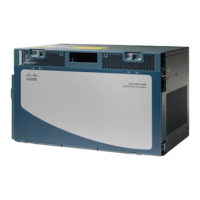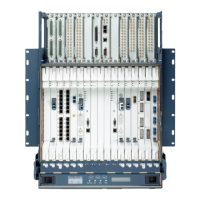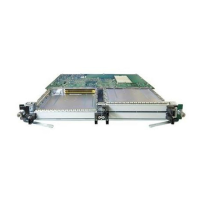2-141
Cisco ONS 15454 Troubleshooting Guide, R8.5
November 2009
Chapter 2 Alarm Troubleshooting
2.7.192 LINK-KEEPALIVE
The node reporting this condition likely reports an “RFI-P” alarm on page 2-205, and the remote node
likely reports a path alarm such as the “AIS-P” alarm on page 2-37 or the “UNEQ-P” alarm on
page 2-252.
Note LCAS-TX-DNU is an informational condition and does not require troubleshooting.
Note For more information about the ML-Series Ethernet cards, refer to the Cisco ONS 15454 and
Cisco ONS 15454 SDH Ethernet Card Software Feature and Configuration Guide.
2.7.192 LINK-KEEPALIVE
Default Severity: Critical (CR), Non-Service-Affecting (NSA)
SONET Logical Objects: ML1000, ML100T, MLFX, OCN
The LINK-KEEPALIVE alarm indicates that a span is not receiving a defined number of keep-alive
messages on the ML card’s IEEE 802.17b-based interface or Cisco proprietary RPR interface within
allotted keep-alive timeout period. Although this alarm defaults to a Critical (CR) severity, it can be
downgraded if the span is protected.
A LINK-KEEPALIVE alarm causes the “RPR-SF” alarm on page 2-214 to be raised also.
LINK-KEEPALIVE is suppressed by the “RPR-PASSTHR” alarm on page 2-209. This alarm clears
when a defined number of consecutive keep-alive messages is received on the interface.
Note In the Cisco IOS CLI “show ons alarms” command display, this alarm is called KEEP-ALIVE-FAIL.
Note The GFP-UP-MISMATCH, GFP-CSF, GFP-LFD, and TPTFAIL alarms suppress the
LINK-KEEPALIVE alarm even though the LINK-KEEPALIVE alarm has higher severity than the other
alarms. The GFP alarms are promoted because the LINK-KEEPALIVE alarm information is contained
within a GFP frame. The TPTFAIL alarm is promoted because it is a layer 1 alarm while
LINK-KEEPALIVE is a layer 2 alarm.
Clear the LINK-KEEPALIVE Alarm
Step 1 Verify that no SONET or GFP circuit alarms that could impact Ethernet data traffic are present. If any
are present, clear them using the relevant procedures in this chapter.
Step 2 Verify that the “DATA-CRC” alarm on page 2-76 is not present. If it is present, complete the
trouble-clearing procedure.
Step 3 Verify that the keep-alive timer on this IEEE RPR 802.17b-based station has the same value as its
neighboring RPR-IEEE stations.
Step 4 If the alarm does not clear, log into the Technical Support Website at http://www.cisco.com/techsupport
for more information or call Cisco TAC 1 800 553-2447.

